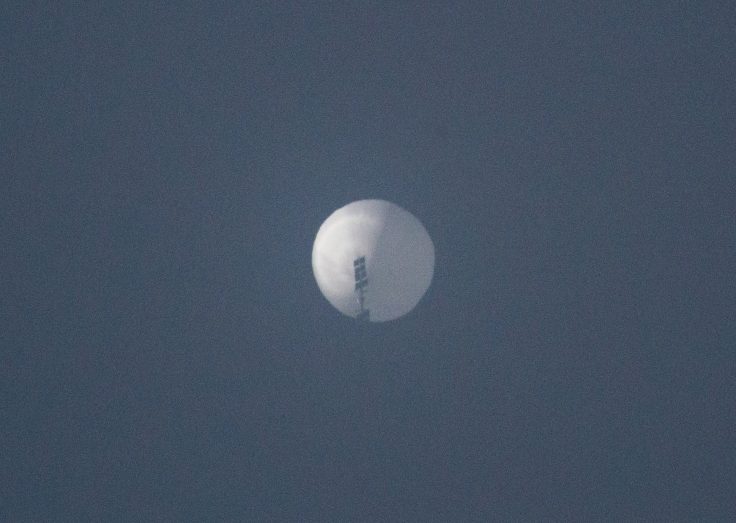If you believed China's propaganda outlets, news of Chinese espionage or aggression against the United States could never, ever be anything but "utterly baseless," "a sensational accusation," "Sinophobia," or "a conspiracy theory," a Washington Free Beacon review found.
After the Defense Department announced Thursday that a Chinese spy balloon was floating over nuclear missile sites in Montana, for example, a China Daily story proclaimed the news a "conspiracy theory," saying the balloon has "no sign linking it to China." The propaganda outlet then attempted to shift the narrative by questioning why the United States is "hoarding such a large stockpile of weapons of mass destruction."
The outlet did not correct the story after Beijing in a Friday statement said the balloon was a Chinese "airship" used for "scientific research."
Another Chinese propaganda outlet, Global Times, eventually admitted the balloon was Chinese after originally suggesting it was from the U.S. military and calling the Pentagon's assessment of the balloon a "sensational accusation" that "Chinese analysts" have "refuted." Following Beijing's statement, the outlet parroted the Communist Party's "scientific research" claim.
"China has explained clearly the balloon spotted in the U.S. is a civilian airship designed for meteorological research purpose," Global Times reported.
Former secretary of state Mike Pompeo in a piece for the Free Beacon scoffed at these claims. "Sure, the CCP's harmless weather balloon just happened to pass over multiple sensitive military sites vital to America's national security," Pompeo wrote Saturday. "Nobody should believe that nonsense, especially not the Biden administration."
After the balloon had drifted across the continental United States, President Joe Biden on Saturday ordered the military to shoot it down, prompting threats of retaliation from China.
The Chinese outlets' reaction to the balloon is just their latest attempt to misdirect readers' attention from Beijing's burgeoning belligerence.
As U.S. lawmakers consider banning Chinese spyware app TikTok, the Communist Party has launched a propaganda blitz, calling critics "racist conspiracy theorists," Fox News reported.
Criticizing TikTok is "Sinophobia," a Global Times columnist wrote last month, likely hoping to win over Western leftists by claiming that any opposition to Beijing comes from "deep-rooted prejudice."
China's anti-American arguments appear to have worked on some left-wing Americans. Socialist congresswoman Alexandria Ocasio-Cortez (D., N.Y.) has a long relationship with Chinese state-controlled media, funneling money since 2020 to the Beijing-controlled newspaper Sing Tao. Another propaganda outlet, Xinhua News Agency, last year used a quote from Ocasio-Cortez on gun violence to criticize the United States. American liberal activist Ryan Deitsch, meanwhile, last year gave an interview to Global Times in which he blasted the United States as a "white supremacist country."
"China has become a master of 'sharp power,' which is using covert or hidden means to manipulate people and bury negative stories, sometimes even before they are written," Center for the Future of Liberal Society associate director Mike Watson wrote last month in the Free Beacon. Beijing "has successfully intimidated American news organizations and academics for decades, its propagandists learn from their mistakes, and its capabilities are growing."
Propagandists' stories never fail to paint China as a peace-loving victim of American conspiracy theories, the Free Beacon's review found.
"China is a responsible country and has always strictly abided by international law," Global Times quoted Chinese chief diplomat Wang Yi, who has overseen an escalation in threats to the independent island democracy of Taiwan, as saying.
